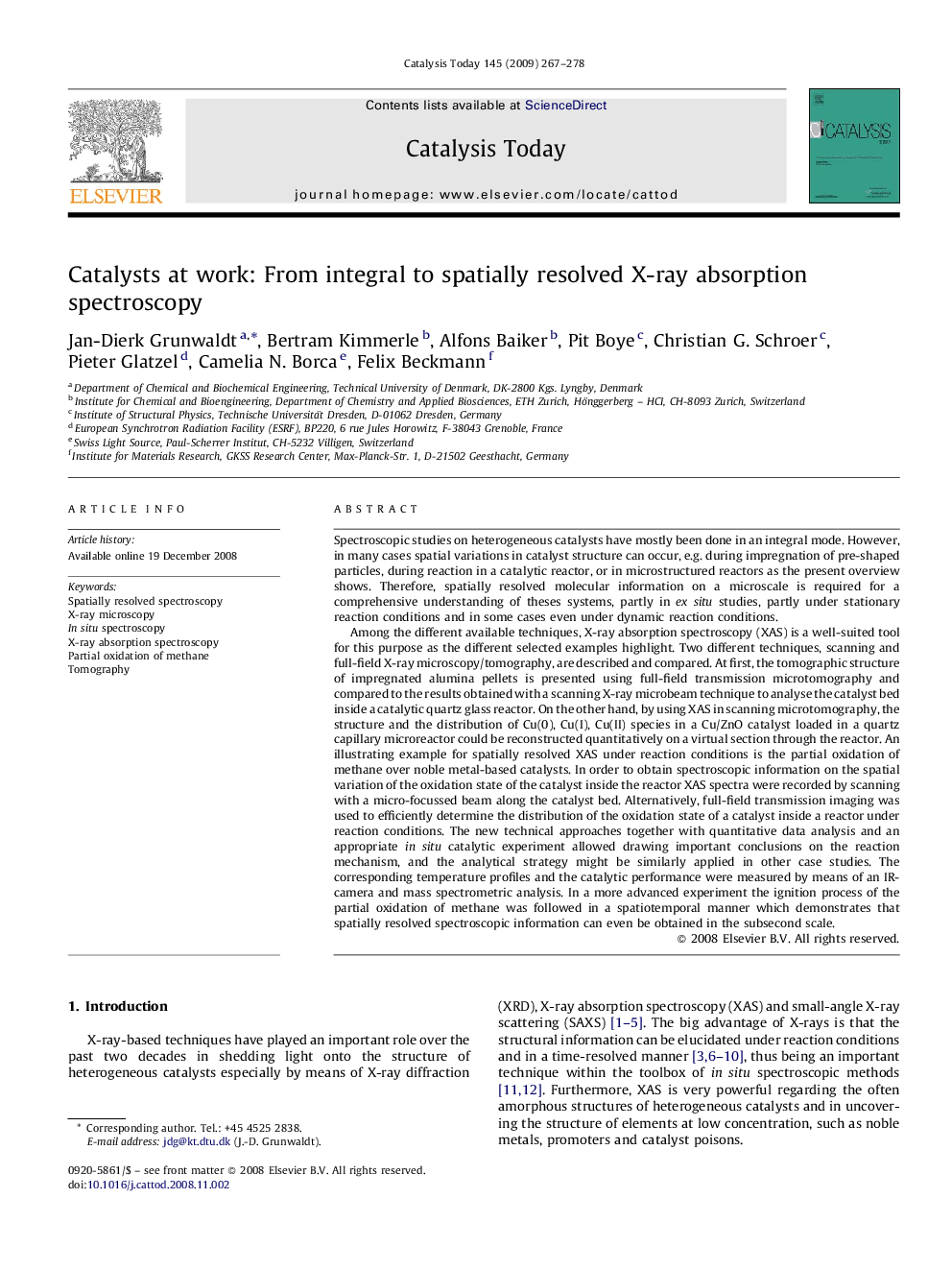| کد مقاله | کد نشریه | سال انتشار | مقاله انگلیسی | نسخه تمام متن |
|---|---|---|---|---|
| 57161 | 47108 | 2009 | 12 صفحه PDF | دانلود رایگان |

Spectroscopic studies on heterogeneous catalysts have mostly been done in an integral mode. However, in many cases spatial variations in catalyst structure can occur, e.g. during impregnation of pre-shaped particles, during reaction in a catalytic reactor, or in microstructured reactors as the present overview shows. Therefore, spatially resolved molecular information on a microscale is required for a comprehensive understanding of theses systems, partly in ex situ studies, partly under stationary reaction conditions and in some cases even under dynamic reaction conditions.Among the different available techniques, X-ray absorption spectroscopy (XAS) is a well-suited tool for this purpose as the different selected examples highlight. Two different techniques, scanning and full-field X-ray microscopy/tomography, are described and compared. At first, the tomographic structure of impregnated alumina pellets is presented using full-field transmission microtomography and compared to the results obtained with a scanning X-ray microbeam technique to analyse the catalyst bed inside a catalytic quartz glass reactor. On the other hand, by using XAS in scanning microtomography, the structure and the distribution of Cu(0), Cu(I), Cu(II) species in a Cu/ZnO catalyst loaded in a quartz capillary microreactor could be reconstructed quantitatively on a virtual section through the reactor. An illustrating example for spatially resolved XAS under reaction conditions is the partial oxidation of methane over noble metal-based catalysts. In order to obtain spectroscopic information on the spatial variation of the oxidation state of the catalyst inside the reactor XAS spectra were recorded by scanning with a micro-focussed beam along the catalyst bed. Alternatively, full-field transmission imaging was used to efficiently determine the distribution of the oxidation state of a catalyst inside a reactor under reaction conditions. The new technical approaches together with quantitative data analysis and an appropriate in situ catalytic experiment allowed drawing important conclusions on the reaction mechanism, and the analytical strategy might be similarly applied in other case studies. The corresponding temperature profiles and the catalytic performance were measured by means of an IR-camera and mass spectrometric analysis. In a more advanced experiment the ignition process of the partial oxidation of methane was followed in a spatiotemporal manner which demonstrates that spatially resolved spectroscopic information can even be obtained in the subsecond scale.
Journal: Catalysis Today - Volume 145, Issues 3–4, 30 July 2009, Pages 267–278